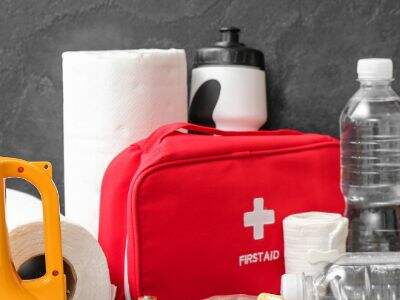Что такое жгут?
Жгут представляет собой внутреннее устройство, похожее на узкий ремень. Этот бинт завязывается вокруг руки или ноги, чтобы предотвратить потерю крови из тела человека, получившего травму. Жгут также следует использовать, если человек сильно кровоточит и традиционные меры первой помощи, такие как прижатие раны, не помогают остановить кровотечение. Применение жгута предотвращает потерю крови, что является крайне важным. Это может быть смертельно опасно.
Всегда помните, что жгут нужно применять только в том случае, если кровотечение нельзя остановить другими средствами. Лучше всего сразу отправиться в отделение неотложной помощи, так как специалисты окажут вам лучшую помощь. Жгут — это серьезный инструмент, и знание того, когда его использовать, очень важно.
Как наложить жгут
Но всегда изучайте технику наложения жгута на случай, если ситуация потребует. Процедура описана ниже:
Найдите кровоточащую рану: определите место раны, убедившись, что вы четко видите ее на руке или ноге. Вы должны ясно видеть открытую рану.
Теперь возьмите жгут и установите его на 2-3 дюйма выше раны. Это означает, что вам нужно переместить его выше по руке или ноге, выше раны и ближе к сердцу человека.
Затяните жгут: Вы должны потянуть его до тех пор, пока кровотечение не остановится. Жгут нужно затянуть так, чтобы пульс в поврежденной конечности больше не ощущался. Иными словами, кровь больше не должна вытекать.
Зафиксируйте жгут: Наконец, укрепите жгут. Это можно сделать, вставив конец жгута в застежку или завязав его узлом. Это поможет предотвратить ослабление жгута.
Ошибки при использовании жгута Ошибки при использовании жгута
Существует несколько распространенных ошибок, которые люди совершают при использовании жгута. Вот на что стоит обратить внимание:
Неправильное расположение: Жгут не должен находиться слишком близко к ране. Если жгут накладывается слишком высоко, он может не остановить кровотечение эффективно. Всегда удостоверьтесь, что пытаетесь поместить его выше по конечности.
Расположение слишком раннее: не ослабляйте жгут слишком рано. Вы можете ослабить его только если медицинская помощь уже прибыла, или если вам нужно отрегулировать его по какой-либо причине. Раннее ослабление может возобновить кровотечение.
Носить слишком долго: избегайте использования жгута дольше необходимого времени. Жгут следует носить минимально возможное время, так как длительное нахождение на конечности может повредить её. Медицинские работники также учтут продолжительность применения жгута при оказании помощи.
Использование жгута до и после
Также вы должны получить согласие пострадавшего или его опекуна перед применением жгута, как это делается перед проведением реанимационных мероприятий. Это способ уважения к человеку и поддержания спокойствия. Также важно максимально успокоить пострадавшего и следить за его дыханием и уровнем бодрствования.
Теперь, когда жгут наложен, вам нужно записать время его применения. Это критически важная информация для медицинского персонала. Они спросят, сколько времени жгут уже находится на месте. Кроме того, пострадавшему нужно обеспечить фиксацию и успокоение, а также внимательно наблюдать за частотой дыхания и любыми изменениями в сознании. Все это поможет сохранить его безопасность до прибытия помощи.
Ограничения использования жгута
Жгуты очень полезны, но у них есть ограничения, и нам нужно знать, какие именно. Вот что важно помнить:
Последнее средство: Жгут должен использоваться как крайняя мера. Если вы можете остановить кровотечение другими способами, например, приложив прямое давление к ране, вы должны сделать это вместо этого.
Потенциальный ущерб: жгуты могут повредить конечность, к которой они применяются. Их следует держать не более нескольких минут. Когда прибудет медицинский персонал или служба скорой помощи, они примут решение о том, сколько времени нужно оставить жгут и окажут дополнительную помощь.
Помните, жгуты не применяются к шее и/или голове. Они используются исключительно на руках или ногах. Если вы наденете его туда, куда не следует, это может привести к смерти.
Вывод:
Жгут является ценным инструментом, когда человек теряет кровь. Очень важно знать, в каких ситуациях его следует использовать или нет. Всегда следуйте инструкциям по применению жгута, будьте особенно внимательны, чтобы не допустить ошибок, как перед использованием, так и после его применения. С этим знанием вы будете готовы и сможете спасти день в чрезвычайной ситуации.
 EN
EN
 FR
FR
 DE
DE
 IT
IT
 JA
JA
 KO
KO
 RU
RU
 ES
ES
 AR
AR
 BG
BG
 HR
HR
 DA
DA
 NL
NL
 FI
FI
 EL
EL
 NO
NO
 PL
PL
 PT
PT
 RO
RO
 SV
SV
 TL
TL
 ID
ID
 SR
SR
 UK
UK
 VI
VI
 SQ
SQ
 TH
TH
 TR
TR
 AF
AF
 MS
MS
 CY
CY
 IS
IS
 HY
HY
 AZ
AZ
 KA
KA
 MN
MN
 MY
MY
 KK
KK
 UZ
UZ
 CS
CS



